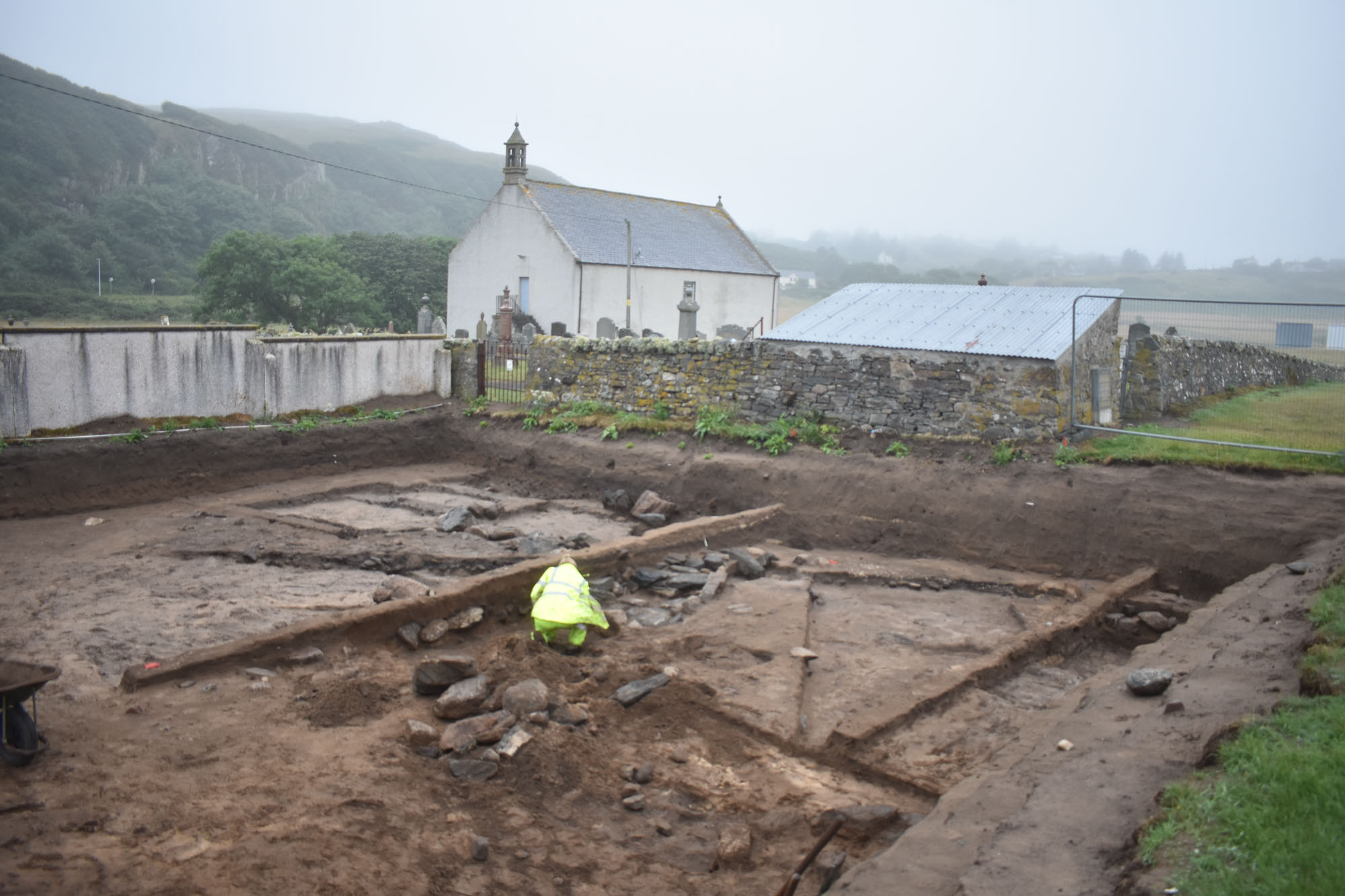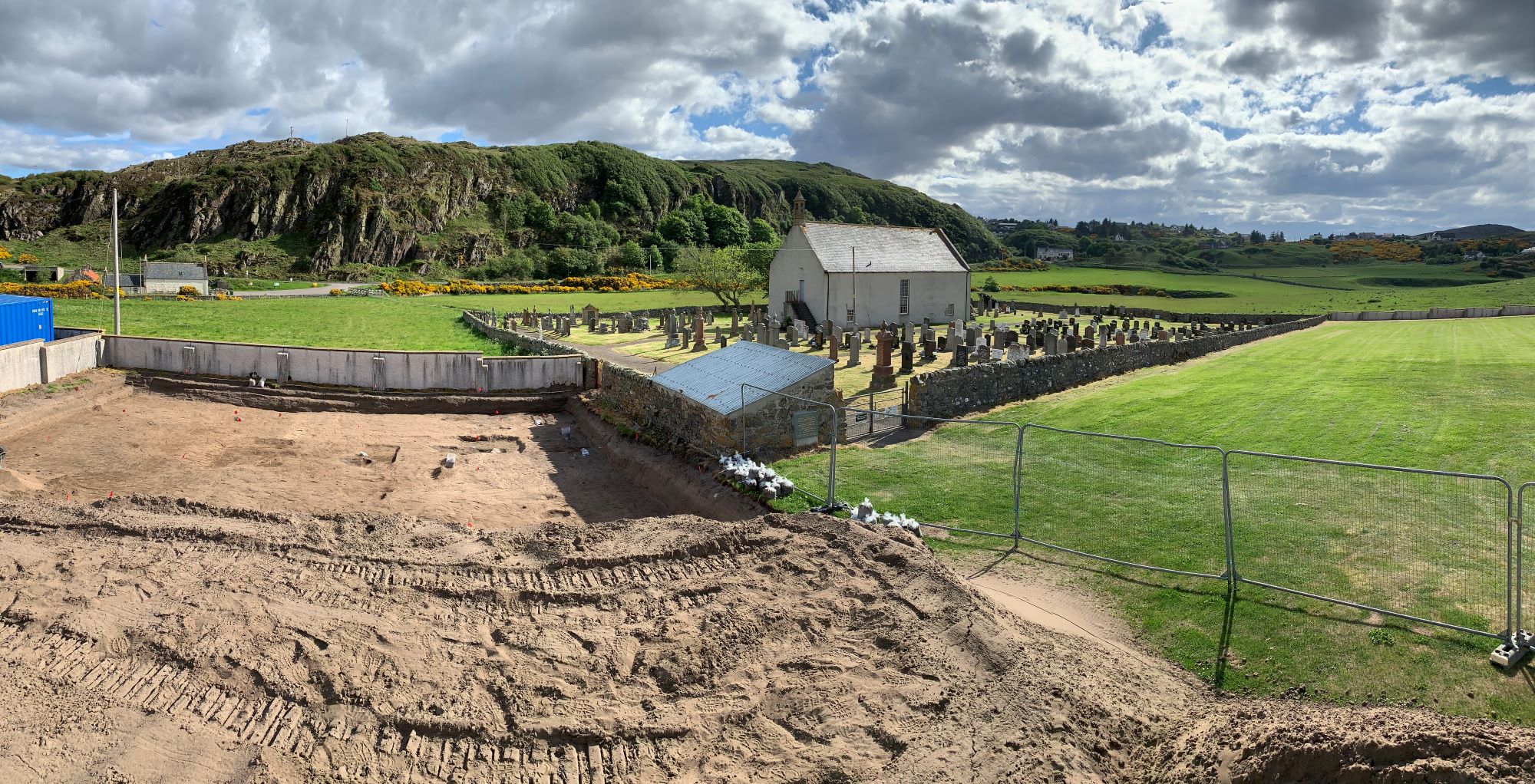Strathnaver Museum is located in the village of Bettyhill on the north coast of Scotland within Farr Old Church. The museum opened in 1976, but recent excavations ahead of redevelopment have revealed a much older past, hinting towards an early Christian or Pictish site, with high status metalworking.
The works were carried out on behalf of Strathnaver Museum as part of a development to build a museum annexe.
The finds from the excavations will form part of the new museum collections.

Farr Old Church
The present building at Farr Old Church (former Parish Church of Columba) was built in 1774 and oversaw a turbulent period of Scottish history during which occupants of the strath were evicted from the land as part of the Highland Clearances.
The church has much older origins and is thought to have been built upon the location of its predecessor, which was erected between AD 1223-1245. Within the graveyard, stands the Farr Stone, a Pictish carved standing stone featuring a decorative cross and two intertwined birds. This early medieval cross slab, which likely dates to the period between AD 400 – 1000, suggests an even older ecclesiastical site may have existed.

Layers of the Past
During 2021, archaeological excavations were carried out ahead of redevelopment and extension of the museum. The main trench contained a series of layers representing different periods of archaeological activity. Preliminary radiocarbon dates indicate early activity on the site originated in the late Iron Age and early medieval periods.
The layers were characterised by midden material (refuse from past occupations made up of mixed animal bone, shell, and charcoal flecks) which can provide important insights into the available resources and diet of the people who occupied this site. Archaeological features were buried within these layers, including groups of pits, hearths, firepits, a possible sunken-floored building, a curvilinear ditch, and stone alignments.


Metalworking
Debris from ironworking processes was found throughout the layers on site, including numerous pieces of slag and plano-convex hearth bases indicating that smelting and/or smithing had likely taken place here. Evidence for bronze working was also found in the form of casting debris and fragments of ceramic moulds. High status, ornamental, bronze objects were found in the form of a crook-headed pin, a strap fitting and a plate or fastener, all of which point to the importance of the site. Iron objects recovered include fragments of rivets and nails, and ard point from an early plough. Metalworking finds such as these have been found on other early Christian, monastic sites.
Images: Crook-headed bronze pin; fragment of ceramic mould (possibly for a ring brooch); small bronze plate/fastener; iron ard/plough point.
























